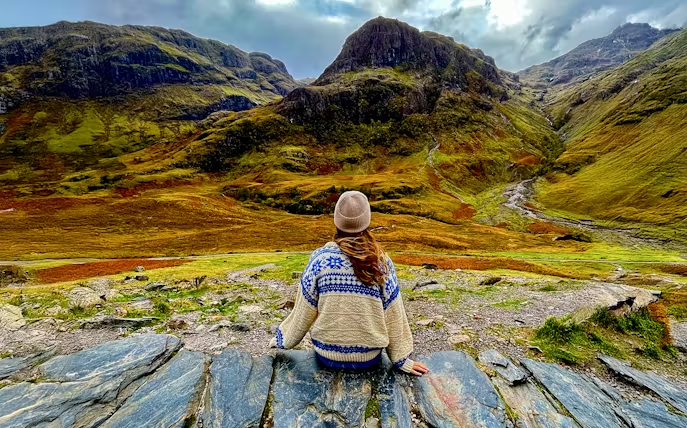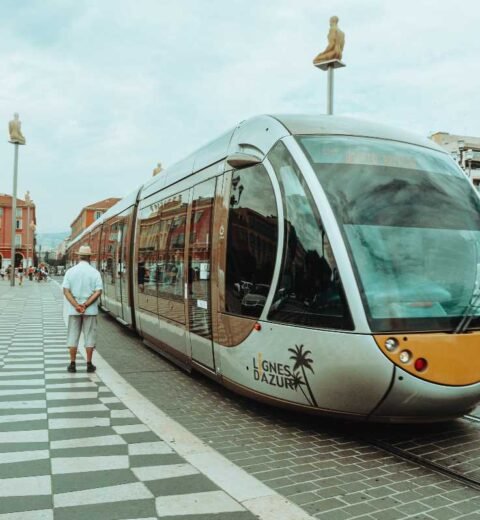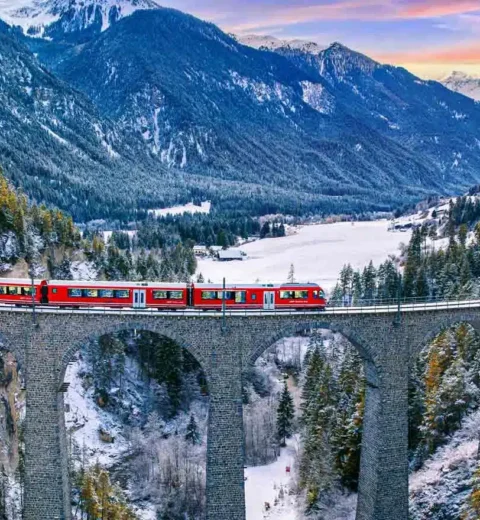Scotland, with its rugged highlands, shimmering lochs, and vibrant history, is a dream destination for travelers seeking adventure, culture, and natural beauty.
Planning the perfect trip to Scotland requires balancing iconic attractions, scenic routes, and practical travel tips to make your journey unforgettable.
This guide covers everything you need to know to craft an epic Scottish adventure, from must-see destinations to insider tips for a seamless trip.
Enjoy Your Event Stress-Free with Euro Travelo
Planning a trip to attend a festival, concert, or business event in Europe can be overwhelming—tickets, travel, accommodation, and local logistics all take time and effort. Euro Travelo makes it simple by providing everything you need through one trusted company. You save time, avoid stress, and enjoy a seamless experience from start to finish.
Why Choose Euro Travelo:
- Secure and easy ticket booking for concerts, festivals, theaters, and business events.
- Complete travel planning including flights, trains, and local transportation.
- Accommodation arrangements near event venues, tailored to your needs.
- Convenient local transfers, from airport pickups to private shuttles.
- On-site concierge support to help you navigate venues and schedules.
- Custom itineraries and experience packages combining multiple events, tours, and activities.
- Secure payment process, making it safe and convenient to book all services online.
- Flexibility: even if you need only one service, we can assist individually.
Why Visit Scotland?
Scotland offers a unique blend of dramatic landscapes, rich heritage, and warm hospitality. Whether you’re drawn to the misty Isle of Skye, the historic streets of Edinburgh, or the whisky-soaked trails of Speyside, Scotland has something for everyone.
Its compact size makes it ideal for road trips, allowing you to explore castles, glens, and coastal cliffs in a single journey.
Step 1: Choose the Best Time to Visit
Timing your trip is key to enjoying Scotland’s beauty and avoiding unpredictable weather. Here’s a breakdown of the seasons:
- Spring (March-May): Mild weather, blooming landscapes, and fewer crowds. Perfect for hiking and exploring rural areas.
- Summer (June-August): Warmest months, ideal for festivals like the Edinburgh Fringe. Expect more tourists and higher prices.
- Autumn (September-November): Stunning fall colors, quieter attractions, and crisp weather. Great for photography.
- Winter (December-February): Cold and wet, but magical for cozy pub visits and winter festivals like Hogmanay. Some attractions may have reduced hours.
Tip: Pack layers and waterproof gear year-round, as Scotland’s weather can change quickly.
Step 2: Plan Your Itinerary – Top Attractions
Scotland’s attractions range from historic landmarks to natural wonders. Here’s a curated list of must-visit spots:
Edinburgh
- Edinburgh Castle: A historic fortress dominating the city skyline, offering panoramic views and a glimpse into Scotland’s royal past.
- Royal Mile: Wander this bustling street in the Old Town, lined with shops, pubs, and historic sites like St. Giles’ Cathedral.
- Arthur’s Seat: Hike this ancient volcanic hill for breathtaking city views.
Glasgow
- Kelvingrove Art Gallery and Museum: A cultural gem with eclectic exhibits, from fine art to natural history.
- George Square: The heart of Glasgow, surrounded by grand architecture and vibrant energy.
The Highlands
- Glencoe: A dramatic valley perfect for hiking and photography, steeped in history and rugged beauty.
- Ben Nevis: Tackle the UK’s highest peak for a challenging hike and rewarding views.
Isle of Skye
- Fairy Pools: Crystal-clear pools nestled in the Cuillin Mountains, ideal for a scenic walk.
- Old Man of Storr: A striking rock formation with otherworldly views, popular among hikers.
Loch Ness
- Urquhart Castle: Explore the ruins of this castle by the loch, and keep an eye out for Nessie!
- Loch Ness Centre: Learn about the loch’s history and the legend of the monster.
Stirling
- Stirling Castle: A historic stronghold with stunning views and ties to William Wallace.
- Wallace Monument: A tribute to Scotland’s hero, offering sweeping views of the surrounding countryside.
Step 3: Craft Your Route
Scotland’s compact size makes it perfect for road trips. Here are two iconic routes to consider:
The North Coast 500 (NC500)
- Duration: 5-7 days
- Distance: ~500 miles
- Highlights: This circular route starts and ends in Inverness, winding through the Highlands, coastal cliffs, and remote villages. Key stops include Durness, John O’Groats, and the Bealach na Bà pass.
- Tips: Book accommodations early, especially in summer, and check road conditions for narrow single-track roads.
The Isle of Skye and Highlands Loop
- Duration: 4-5 days
- Distance: ~300 miles
- Highlights: Start in Edinburgh or Glasgow, head to Glencoe, then cross to Skye via the Skye Bridge. Explore the island’s Fairy Pools and Old Man of Storr before looping back via Loch Ness.
- Tips: Allow time for spontaneous stops at scenic viewpoints, and check ferry schedules if visiting smaller islands.
Step 4: Travel Tips for a Seamless Trip
Getting There
- By Air: Fly into Edinburgh (EDI) or Glasgow (GLA) for major international connections. Inverness (INV) is great for Highlands-focused trips.
- By Train: ScotRail offers scenic routes, like the West Highland Line from Glasgow to Mallaig, passing through stunning landscapes.
- By Car: Renting a car is ideal for flexibility. Drive on the left, and be prepared for narrow rural roads.
Where to Stay
- Cities: Hotels and Airbnbs in Edinburgh and Glasgow cater to all budgets.
- Rural Areas: Opt for cozy B&Bs, traditional inns, or self-catering cottages for an authentic experience.
- Camping: Wild camping is legal in Scotland (with restrictions), but book campsites in advance during peak season.
What to Eat
- Haggis: Scotland’s national dish, often served with neeps (turnips) and tatties (potatoes).
- Seafood: Try fresh oysters, smoked salmon, or fish and chips on the coast.
- Whisky: Visit distilleries in Speyside or Islay for tastings and tours.
- Shortbread: A sweet treat perfect for snacking on the go.
Packing Essentials
- Waterproof jacket and sturdy hiking boots for unpredictable weather.
- A good camera for capturing Scotland’s photogenic landscapes.
- A reusable water bottle and snacks for long drives or hikes.
Cultural Tips
- Respect the Land: Follow the Scottish Outdoor Access Code when hiking or camping.
- Embrace the Weather: Locals joke about experiencing “four seasons in one day.” Stay flexible and enjoy the charm of Scotland’s moody skies.
- Learn a Few Phrases: A friendly “cheers” (thank you) or “aye” (yes) goes a long way.
Step 5: Sample 7-Day Itinerary
Day 1-2: Edinburgh
- Explore Edinburgh Castle, the Royal Mile, and Arthur’s Seat.
- Enjoy a traditional pub dinner with live folk music.
Day 3: Stirling & Loch Lomond
- Visit Stirling Castle and the Wallace Monument.
- Drive to Loch Lomond for a scenic walk or boat tour.
Day 4-5: Glencoe & Isle of Skye
- Drive through Glencoe’s dramatic landscapes.
- Cross to Skye, visiting the Fairy Pools and Old Man of Storr.
Day 6: Loch Ness & Inverness
- Explore Urquhart Castle and take a Loch Ness cruise.
- Spend the evening in Inverness, the Highland capital.
Day 7: Return to Edinburgh
- Drive back via Pitlochry or the Cairngorms National Park.
- Stop for a whisky tasting or a final hike.
Bonus Tips for an Unforgettable Trip
- Book in Advance: Popular attractions like Edinburgh Castle and distilleries require pre-booked tickets, especially in summer.
- Embrace Spontaneity: Leave room in your itinerary for hidden gems like quaint villages or roadside lochs.
- Check Events: Look up local festivals, like Highland Games or ceilidhs, for a cultural experience.
- Stay Connected: Wi-Fi can be spotty in rural areas, so download offline maps (e.g., Google Maps or Maps.me).
7-Day Scotland Trip Itinerary
Plan your perfect Scotland adventure with this concise 7-day itinerary covering top attractions and scenic routes.
| Day | Location | Activities |
| 1-2 | Edinburgh | Explore Edinburgh Castle, Royal Mile, and hike Arthur’s Seat; enjoy a pub dinner with live folk music. |
| 3 | Stirling & Loch Lomond | Visit Stirling Castle, Wallace Monument, and take a scenic walk or boat tour at Loch Lomond. |
| 4-5 | Glencoe & Isle of Skye | Drive through Glencoe’s dramatic landscapes; visit Fairy Pools and Old Man of Storr on Skye. |
| 6 | Loch Ness & Inverness | Explore Urquhart Castle, take a Loch Ness cruise, and spend the evening in Inverness. |
| 7 | Return to Edinburgh | Visit Stirling Castle, the Wallace Monument, and take a scenic walk or boat tour at Loch Lomond. |
Final Thoughts
Planning the perfect Scotland trip is about blending iconic sights with the freedom to explore its wild, untamed beauty. Whether you’re chasing history in Edinburgh, hiking in the Highlands, or savoring whisky by a loch, Scotland will leave you enchanted. Start with this guide, tailor it to your interests, and get ready for an adventure filled with unforgettable moments.
Happy travels, and may your Scottish journey be as epic as a Highland tale!
Ready to Plan Your Dream Trip to Germany?
If you’ve been dreaming of exploring Germany’s stunning castles, vibrant cities, and rich cultural heritage, this guide will help turn that dream into reality!
From planning your itinerary and setting your budget to uncovering hidden gems beyond Berlin, Munich, and Hamburg — we’ve got everything you need to make your German getaway smooth and unforgettable.
Click the link below to learn step-by-step how to plan your trip to Germany:
How to Plan a Trip to Germany
Whether you’re visiting for the first time or returning to dive deeper into Germany’s history, eurotravelo.com offers expert tips, travel hacks, and detailed itineraries to help you experience the best of Germany. Visit our site and start planning your German adventure today!
FAQs
What is the best time of year to visit Scotland?
The best time depends on your preferences: spring (March-May) offers mild weather and fewer crowds, summer (June-August) is ideal for festivals but busier, autumn (September-November) has stunning fall colors, and winter (December-February) is great for cozy experiences like Hogmanay, though colder and wetter.
How many days do I need to explore Scotland?
A 7-day itinerary, as outlined in the blog, covers major highlights like Edinburgh, Glencoe, the Isle of Skye, and Loch Ness. For a deeper exploration, including the North Coast 500 or smaller islands, consider 10-14 days.
Is it better to rent a car or use public transport for a trip?
Renting a car is recommended for flexibility, especially for rural areas like the Highlands and the Isle of Skye. However, ScotRail’s scenic train routes, like the West Highland Line, are great for city-to-city travel or specific scenic journeys.
What should I pack for Scotland’s unpredictable weather?
Pack layers, a waterproof jacket, sturdy hiking boots, and a hat or scarf. The blog emphasizes preparing for “four seasons in one day,” so a reusable water bottle and snacks are also handy for road trips and hikes.
Are there any cultural tips for traveling in Scotland?
Respect the Scottish Outdoor Access Code when hiking or camping, embrace the weather with a positive attitude, and learn simple phrases like “cheers” (thank you) or “aye” (yes) to connect with locals, as suggested in the blog.




